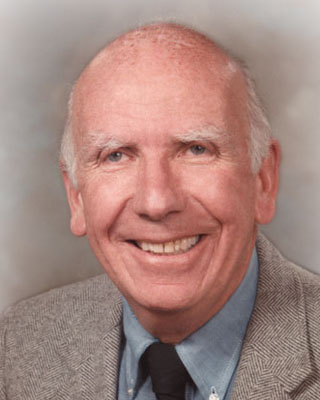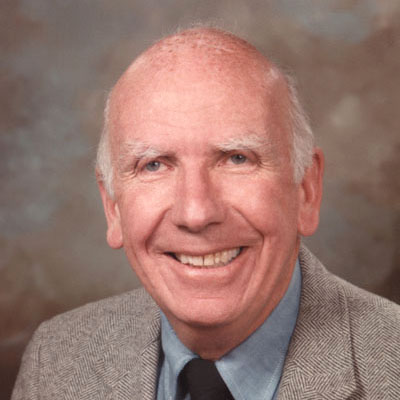Interests in earthquake dynamics and music were driven by a seismologist's passion for understanding the physics behind pattern recognition.
By Paul Davis and David Jackson, UCLA
Leon Knopoff, a preeminent seismologist, died at his home in Los Angeles, California, on 20 January. His extraordinary talents spanned fields as diverse as quantum mechanics and musicology, earning him a reputation as a Renaissance man of the modern era.
Knopoff was born in Los Angeles in 1925. He studied electrical engineering as an undergraduate and obtained his PhD in physics and mathematics at the California Institute of Technology (Caltech) in 1949. The following year, he was recruited by Louis Slichter to the Institute of Geophysics at the University of California, Los Angeles (UCLA), as a research associate. He held faculty positions at Miami University in Ohio (1948-1950) and Caltech (1962-1963). Knopoff became a professor of Geophysics and Physics at UCLA, where he remained for 60 years. His interests in pattern recognition and music coalesced when, as an accomplished pianist and harpsichordist, he became a research musicologist at the UCLA Institute of Ethnomusicology shortly after it was formed in 1960.
Among many honors, Knopoff was elected to the US National Academy of Sciences (1963) and the American Philosophical Society (1992), and as a fellow of the American Academy of Arts and Sciences (1965). He received the H. F. Reid medal of the Seismological Society of America, the gold medal of the Royal Astronomical Society, the Emil Wiechert medal of the German Geophysical Society, and a Docteur Honoris Causa from Université Louis Pasteur, Strasbourg. He particularly treasured four teaching awards from the UCLA Physics Department. Along with his many students and colleagues, we benefi ted from his extraordinary ability to teach complexity in the simplest of terms, with an infectious animation and the patience to impart understanding.
His encyclopedic memory and theoretical prowess earned him many first discoveries listed in more than 350 publications involving his 39 research students and 40 postdoctoral scholars. In 1956, Knopoff published a theoretical framework for the "double couple" model of an earthquake (considers ground motion across a fault plane), which is now a standard approach used by engineers and seismologists to predict ground shaking. He showed how motion on a boundary, such as a seismic fault, is linked to displacements in a medium, such as Earth's crust, and demonstrated that the displacements are proportional to the velocity of slip across a fault plane.
In the 1960s, Knopoff's independent and collaborative work included developing computational approaches for understanding the dynamics of fault planes and the propagation of seismic waves. These laid down the models for using seismograms (recordings of ground motion as a function of time) to obtain both the earthquake mechanism and the velocity along the ray path. He not only pioneered the installation of temporary long-period seismograph stations in locations throughout the European Alps; he and colleagues Stephan Mueller and Walter Pilant were the first to perform digital processing of long-period seismograms in 1966. At the South Pole, Knopoff helped develop and install an ultra-long period seismometer and was the first to measure solid Earth polar tides and vibrational modes, unaffected by Earth's rotation and elliptical shape.
 L E O N K N O P O F F ____________________________________________________________________________________________________________
L E O N K N O P O F F ____________________________________________________________________________________________________________

